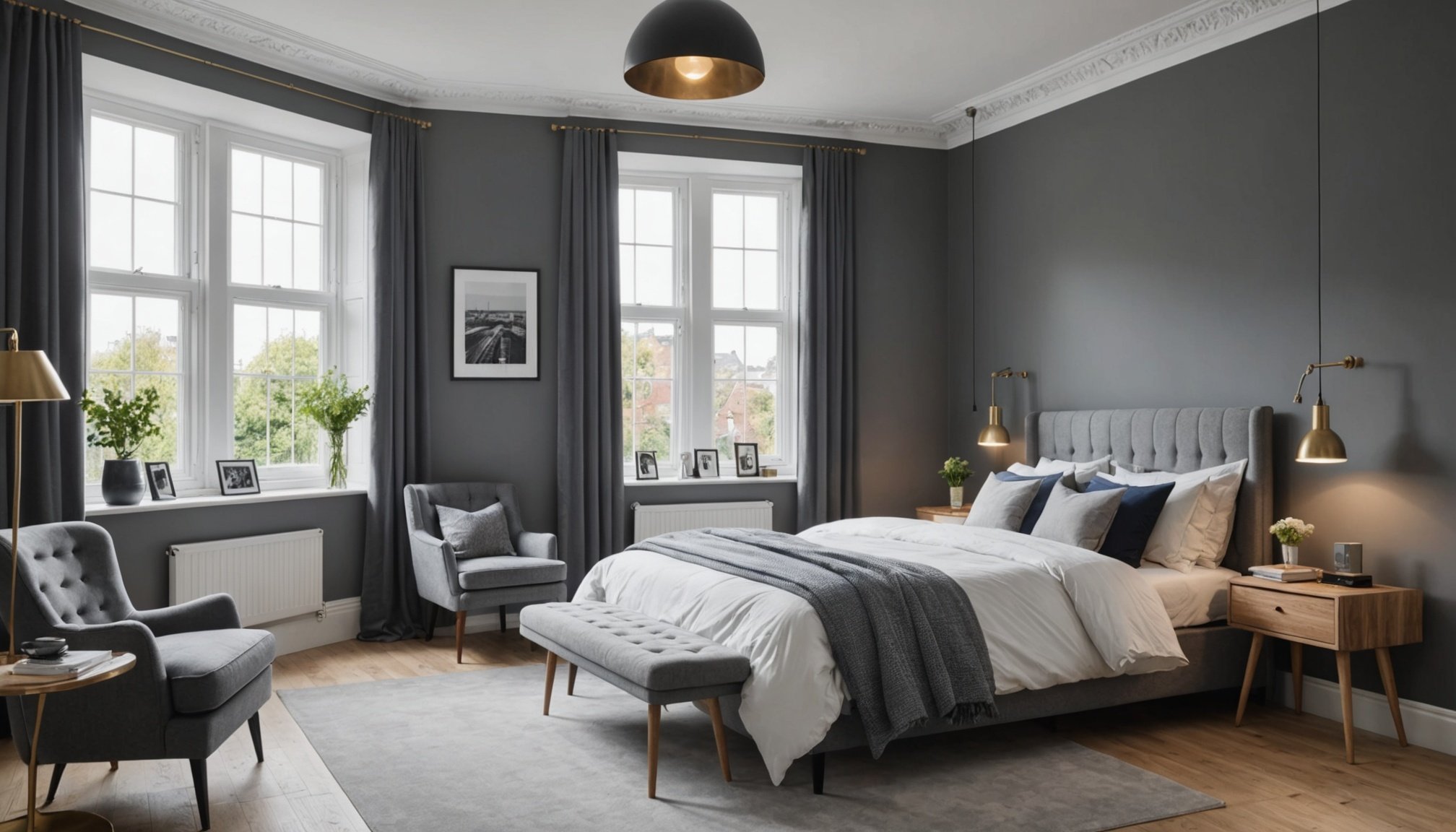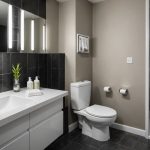Soundproofing is a hot topic for many, with the hustle and bustle of city life, noisy neighbours or simply wanting a bit of peace and quiet at the end of a long day. Specific to the UK, the semi-detached and terraced houses are quite common, which can sometimes lead to unwanted sound transmission. But fear not, there are several cost-effective ways to soundproof your bedroom without breaking the bank. From investing in soundproofing panels to applying acoustic insulation, you will find feasible ways to block out noise and create a serene space.
1. Soundproofing the Walls
The common walls shared with other rooms or neighbours can be a major source of noise transmission. Soundproofing these walls can be an effective way to reduce unwanted noise. Various methods can be used to soundproof walls, from adding mass to installing a secondary stud wall.
En parallèle : Unraveling the secrets of antique astronomical clocks
Adding mass to a wall can be achieved by using dense materials such as mass-loaded vinyl (MLV). MLV is a thin but heavy sheet that is very effective at blocking sound. This is due to the principle that more mass equates to better sound insulation. However, it is essential to note that adding mass to your walls will decrease room space slightly.
On the other hand, installing a secondary stud wall is another effective method. This involves building a separate wall with a small gap from the existing wall. The gap is then filled with acoustic insulation to prevent sound from traveling through. This method is slightly more costly and time-consuming but provides better soundproofing compared to just adding mass.
A lire également : What are the best natural cleaning products for UK households with allergies?
2. Soundproofing the Floor and Ceiling
Just like walls, the floor and ceiling can also be conduits for noise, especially in multi-storey houses. Adding a layer of insulation to your floor and ceiling can be a very effective way to minimise noise transmission.
Carpeting is a simple and cost-effective way to soundproof your floor. The material of the carpet absorbs sound, reducing the echo and reverberation within the room. Moreover, carpets are easy to install and come in a variety of colours and designs to suit your room’s aesthetic.
For the ceiling, installing acoustic ceiling panels can significantly reduce noise transmission. These panels are designed to absorb sound and prevent it from bouncing off the ceiling. Although a bit more expensive than carpeting, acoustic ceiling panels are worth the investment for their effective soundproofing properties.
3. Soundproofing the Doors
Doors are often overlooked when it comes to soundproofing. However, they can be a significant source of noise, especially if they are hollow or have gaps around the edges. Luckily, there are straightforward and cost-effective methods to soundproof your doors.
One of the most cost-effective methods is to install weatherstripping around the door. This not only seals gaps where sound can travel through but also reduces draughts and heat loss. If your door is hollow, consider replacing it with a solid door. Solid doors have more mass, and as a result, they are more effective at blocking sound. Additionally, you can use a door sweep to seal the gap at the bottom of the door.
4. Windows and Ventilation Soundproofing
Sunlight is not the only thing that can come through your windows. Noise can, too. Therefore, investing in double glazing can be a worthy investment. Double-glazed windows have two layers of glass separated by a vacuum or gas, which acts as a noise buffer. Additionally, you can use soundproofing curtains which are made from specially designed material that absorbs sound.
For ventilation, using soundproof ventilation covers can be an effective way to block noise. These covers are designed to absorb sound while still allowing air to pass through. They are easy to install and can be an excellent addition to your soundproofing efforts.
5. Using Decorative Elements for Soundproofing
Last but not least, the use of decorative elements can be an easy and cost-effective method of soundproofing. Items such as bookshelves, upholstered furniture, and heavy curtains can absorb sound and reduce echo. Not only will your room look great, but it will also be quieter.
Consider positioning a large bookshelf against a wall that faces a noisy area. The books and shelf will absorb a lot of the sound, reducing how much reaches your ears. Similarly, upholstered furniture such as sofas and armchairs can absorb sound. By strategically placing these items in your room, you can significantly reduce noise levels.
By implementing these practical and affordable solutions, you can achieve a soundproof bedroom without stretching your budget. Remember, a peaceful environment is key to a good night’s sleep and overall well-being.
6. The Role of Acoustic Plasterboard in Wall Soundproofing
Soundproofing your bedroom can be taken a notch higher by incorporating acoustic plasterboard in your efforts. This unique plasterboard is engineered with higher density and mass compared to regular plasterboard, making it a stellar performer in noise reduction. It’s particularly effective in combating airborne noise, which includes general conversation, television sound, and music, amongst others.
Acoustic plasterboard is typically installed in the same way as regular plasterboard. However, for the best soundproofing results, it’s advisable to fit it with a resilient bar or stud wall system. The resilient bar works by providing a break in the path of the sound, stopping it from passing through the other side of the wall. It’s specifically designed to absorb and dissipate sound energy, providing an extra layer of sound insulation.
The stud wall system, on the other hand, involves creating a new wall alongside your existing one, creating a space in between. This gap is then filled with acoustic insulation to further thwart sound transmission. By using acoustic plasterboard with these systems, you can create a robust soundproofing solution that doesn’t compromise on the room’s aesthetics or space.
Using acoustic plasterboard for wall soundproofing might be slightly more costly in comparison to other methods, but the level of soundproofing it offers justifies the investment. It’s an excellent solution if you desire a quieter bedroom, free from unwanted noise interruptions.
7. Importance of Sealing The Door Frame
While soundproof doors are effective in reducing noise, it’s equally crucial to pay attention to the door frame. No matter how solid or soundproof your door is, if gaps exist around the door frame, sound can still seep through. As such, it’s essential to ensure your door frame is well sealed to prevent unwanted noise from entering your room.
Weatherstripping is one of the most efficient and cost-effective ways to seal the gaps around your door frame. It’s a material that helps insulate your door, preventing draughts and keeping out external noises. It’s available in various materials like vinyl, metal, and rubber, all offering different levels of sound absorption and insulation. You simply stick it around the door frame, and it will act as a barrier to stop the sound.
Another practical solution is to use an acoustic sealant, which is specifically designed to prevent sound transmission. You apply it around the door frame to fill any gaps or crevices. Acoustic sealant is flexible and doesn’t harden over time, maintaining a tight seal that keeps out noise.
Remember, even the smallest gap can make a big difference when it comes to reducing noise. Therefore, sealing your door frame is a vital step in achieving a soundproof room.
Conclusion
Living in a noisy environment can be draining, affecting your sleep quality and overall well-being. However, with the right strategies and materials, it’s possible to create a peaceful, soundproof bedroom. From adding mass to your walls with elements like mass-loaded vinyl, installing a stud wall system or acoustic plasterboard, carpeting your floors, to sealing your door frame, every detail counts in noise reduction.
While some soundproofing methods might require more time and resources, the tranquillity they bring is worth the investment. It’s all about identifying the most significant sources of noise and addressing them accordingly. With the cost-effective solutions highlighted in this guide, you can look forward to reduced noise disturbances, improved sleep, and a more peaceful lifestyle in your UK home. Soundproofing your bedroom is indeed a worthwhile home improvement project.











